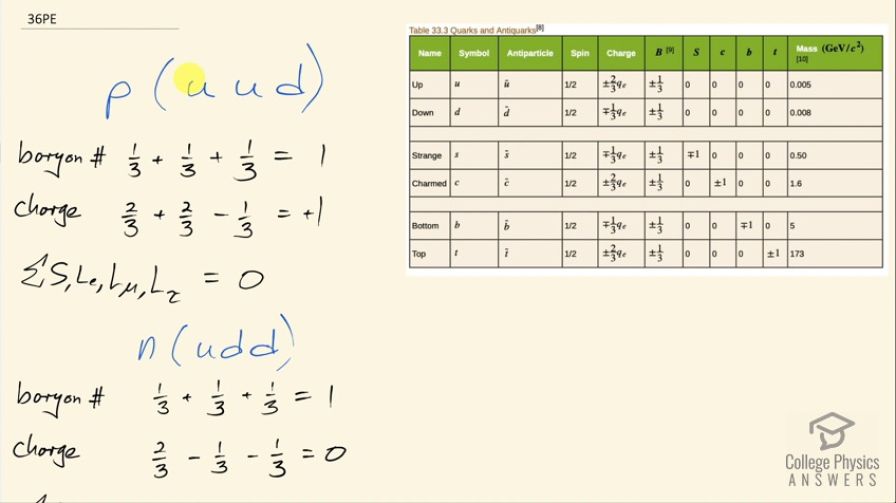Question
Verify the quantum numbers given for the proton and neutron in Table 33.2 by adding the quantum numbers for their quark constituents as given in Table 33.3.
Final Answer
Please see the solution video.
Solution video
OpenStax College Physics for AP® Courses, Chapter 33, Problem 36 (Problems & Exercises)

vote with a rating of
votes with an average rating of
.
Video Transcript
This is College Physics Answers with Shaun Dychko. We are going to verify the quantum numbers for protons and neutrons based on the quantum numbers of their constituent quarks. So a proton has an up, up and down quark and each up quark has a baryon number of positive one-third and then the down quark also has a baryon number of positive one-third for a total of 1. And for the charge, each up quark has a charge of two-thirds of the elementary charge and then the down quark has a charge of negative one-third and this makes a total of positive 1. The total strangeness, electron family number, muon family number and tau family number are all 0 as we can see here. And then for the neutron, the baryon number is one-third for each of the quarks for a total of 1 and the charge is two-thirds of the up quark and then negative one-third and negative one-third for each of the down quarks for a total charge of 0. And also the total strangeness and and the total lepton numbers are all 0.